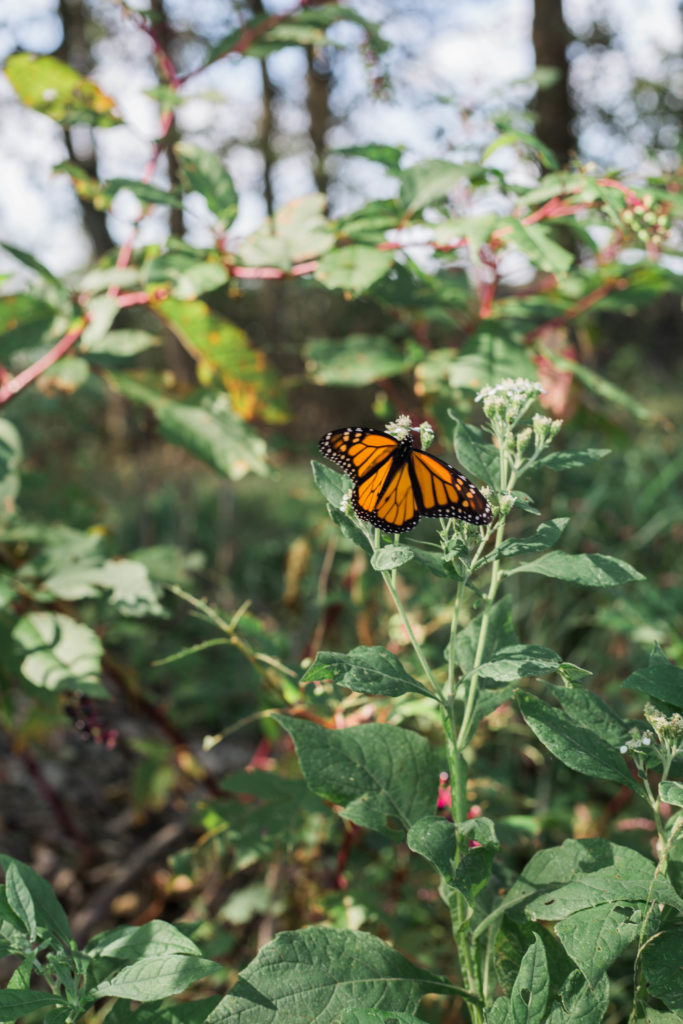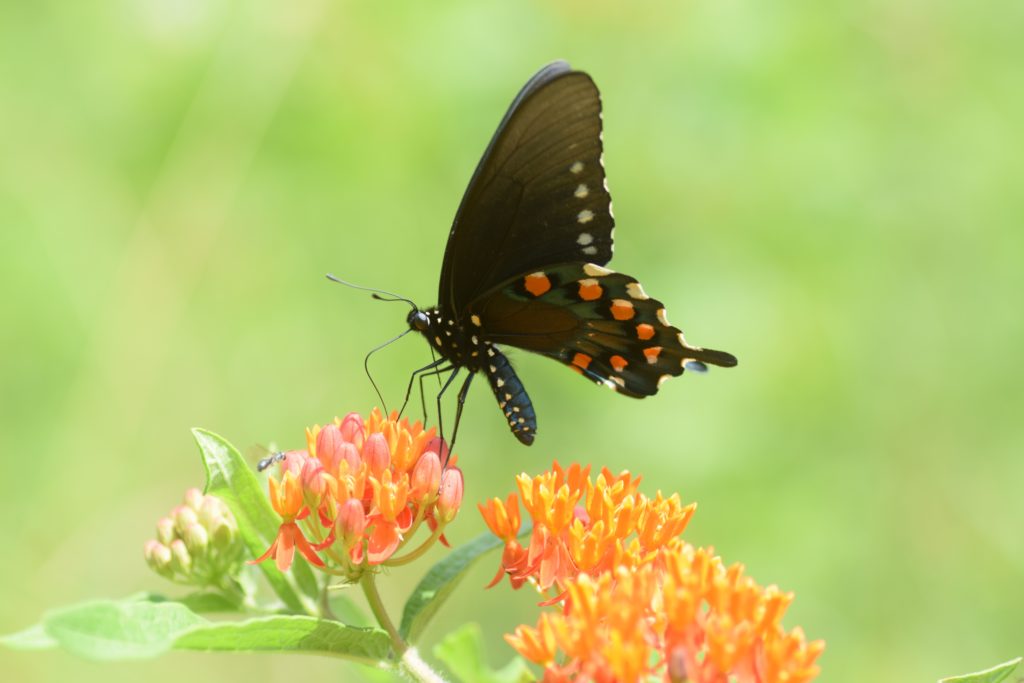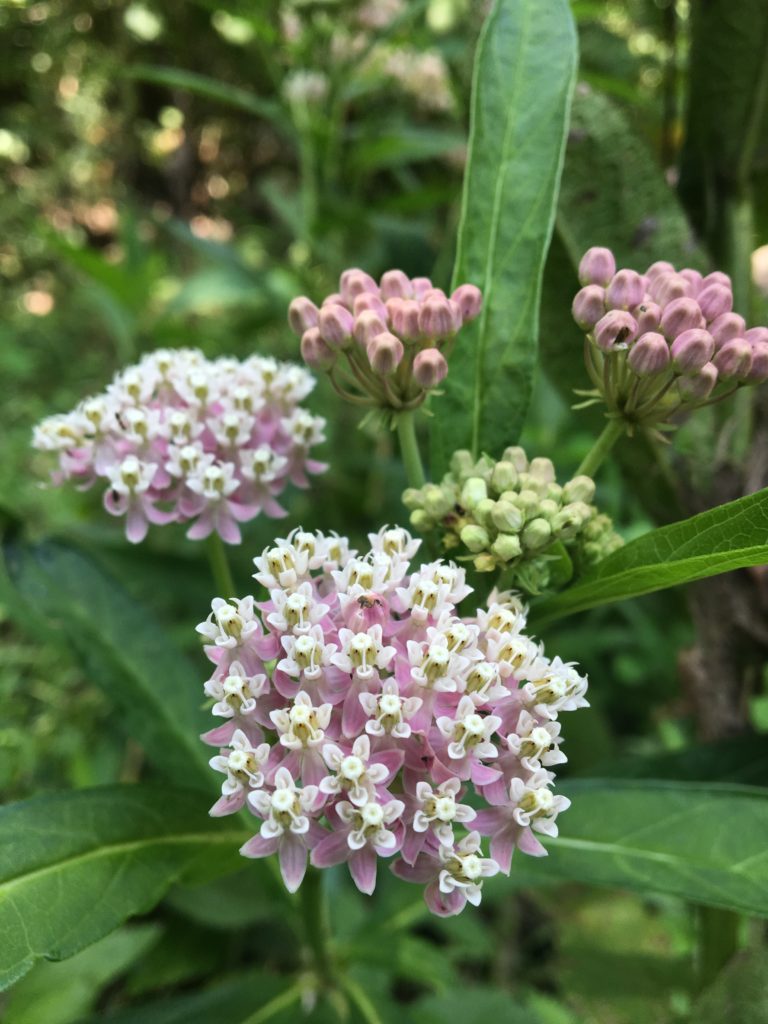Ben Leffew, Preserve Manager
Laura Baird, Assistant Preserve Manager

Entering the summer months marks not only a transition in the seasons on the calendar, but also a transition in the species of blooming plants which act as sources of nectar, pollen, and sites for insects to lay eggs.
Spring forest wildflowers offer a food source for pollinators as early as February, when they can take advantage of sunlight hitting the forest floor before the trees start to shade the understory. As spring ends, most forest plants have finished blooming and the show picks up out in the prairies, where wildflowers can thrive throughout the warm months without having to compete for light with large trees.
Of the many diverse, vibrant wildflowers of summer, milkweed stands out from the rest as both an excellent nectar source, providing liquid energy for wide variety of insect species, as well as being the only plants monarch butterflies lay their eggs on.
Five species of milkweed have been confirmed in The Preserve at Shaker Village: common (Asclepias syriaca), butterfly (Asclepias tuberosa), green (Asclepias viridis), swamp (Asclepias incarnate), and four-leafed (Asclepias quadrifolia). Not surprisingly, common milkweed is the most abundant on the property as it is large, extremely tough, spreads itself easily and responds well to our prescribed fire regime.

The relationship between monarchs and milkweeds is one of the most famous examples of specialization in the insect world, and dates back millennia. Milkweeds produce a thick, sticky, toxic sap reminiscent of white latex, and have small hairs on the leaves to deter insects from taking a bite. Despite these physical and chemical defenses, several insects have evolved the ability to not only consume milkweed, but consume it exclusively. Monarchs are the most famous of these, requiring milkweed to lay their eggs.

If it seems like monarch butterflies are getting a lot of attention these days, it’s for good reason. Monarchs have become an ambassador species for both large-scale prairie habitat restoration and small, backyard pollinator gardens and waystations. Providing good, milkweed-rich habitat for monarchs also benefits hundreds of other insect species that thrive in the prairie and in turn feed our many birds.
The Preserve at Shaker Village has miles of trails crossing through native prairies for you to explore! If you would like to learn more about monarch butterflies first-hand, you might enjoy our Monarch Butterfly Tagging workshop in September!